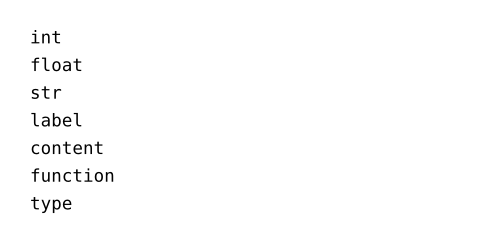type
Describes a kind of value.
To style your document, you need to work with values of different kinds: Lengths specifying the size of your elements, colors for your text and shapes, and more. Typst categorizes these into clearly defined types and tells you where it expects which type of value.
Apart from basic types for numeric values and typical types known from programming languages, Typst provides a special type for content. A value of this type can hold anything that you can enter into your document: Text, elements like headings and shapes, and style information.
Example
#let x = 10
#if type(x) == int [
#x is an integer!
] else [
#x is another value...
]
An image is of type
#type(image("glacier.jpg")).

The type of 10 is int. Now, what is the type of int or even type?
#type(int) \
#type(type)

Compatibility
In Typst 0.7 and lower, the type function returned a string instead of a
type. Compatibility with the old way will remain until Typst 0.14 to give
package authors time to upgrade.
- Checks like
int == "integer"evaluate totrue - Adding/joining a type and string will yield a string
- The
inoperator on a type and a dictionary will evaluate totrueif the dictionary has a string key matching the type's name
ConstructorParameterParameters are input values for functions. Specify them in parentheses after the function name.
Determines a value's type.
#type(12) \
#type(14.7) \
#type("hello") \
#type(<glacier>) \
#type([Hi]) \
#type(x => x + 1) \
#type(type)

valueanyRequiredRequiredRequired parameters must be specified when calling the function.PositionalPositionalPositional parameters can be set by specifying them in order, omitting the parameter name.
The value whose type's to determine.